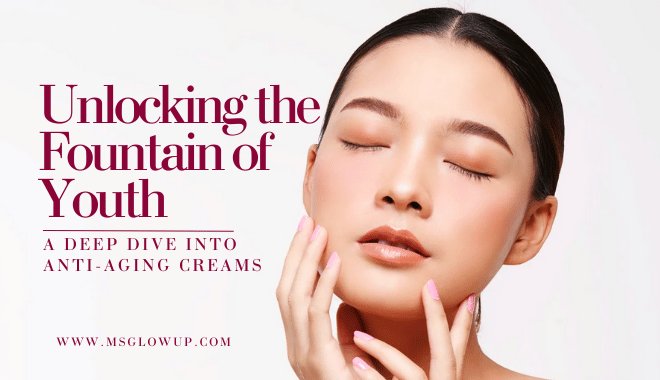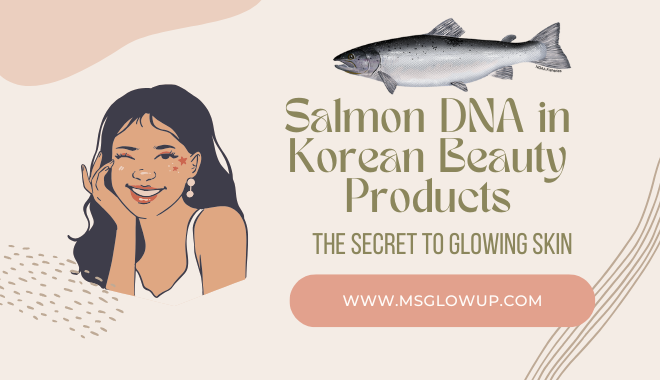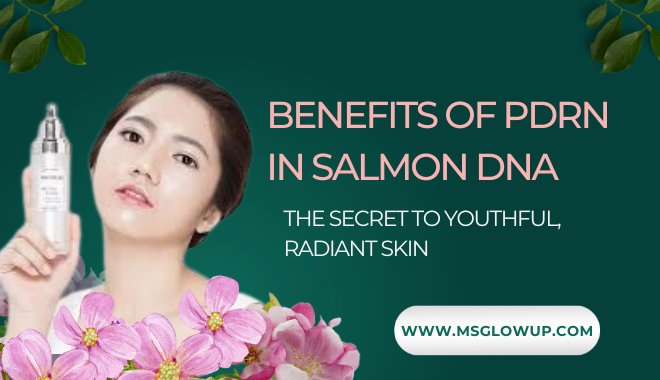Ah, the elusive fountain of youth—a concept that has tantalized humans for centuries. While we can’t exactly turn back time, we can certainly try to slow it down. Enter the world of anti-aging creams, those magical elixirs promising to keep our skin looking fresh and youthful. But with so many options out there, how do you find the cream that’s right for you? Let’s dive into the nitty-gritty of anti-aging creams and explore how they work, what ingredients to look for, and how to incorporate them into your skincare routine.

The Science of Aging Skin
Before we explore the magic potions themselves, let’s chat about why our skin ages in the first place. Aging is a natural process influenced by both intrinsic factors (like genetics) and extrinsic factors (like sun exposure and lifestyle choices). As we age, our skin loses collagen and elastin—two proteins that keep it firm and elastic. This loss leads to wrinkles, sagging, and those pesky fine lines.
Moreover, factors like UV radiation, pollution, and smoking can accelerate this process. They generate free radicals, which are unstable molecules that damage skin cells. So, when we talk about anti-aging creams, we’re looking at products designed to combat these effects and give our skin a helping hand.
Key Ingredients in Anti-Aging Creams
Key Ingredients in Anti-Aging Creams: What to Look For and Why They Matter
When it comes to anti-aging creams, not all formulas are created equal. The efficacy of a product largely depends on its ingredients and how they interact with your skin. Understanding these key components can transform your skincare routine, helping you make informed choices and achieve the youthful glow you’re after. Let’s take a deep dive into the essential ingredients that make anti-aging creams effective, exploring what they do and why they’re important.
1. Retinoids (Vitamin A Derivatives)
What They Are:
Retinoids are derivatives of Vitamin A and are considered the gold standard in anti-aging skincare. They are renowned for their ability to accelerate skin renewal, enhance collagen production, and reduce the appearance of fine lines and wrinkles.
Why They Matter:
- Stimulate Collagen Production: Collagen is crucial for maintaining skin elasticity and firmness. Retinoids boost collagen synthesis, which helps to smooth out wrinkles and improve skin texture.
- Increase Cell Turnover: By promoting faster cell turnover, retinoids help to shed dead skin cells and reveal fresher, more even-toned skin underneath.
- Improve Skin Tone and Texture: Regular use can help fade sun spots and reduce rough patches, giving skin a more youthful appearance.
How to Use:
Start with a lower concentration to allow your skin to build tolerance, and apply at night, as retinoids can increase sun sensitivity. Pair with daily sunscreen use for best results.
2. Hyaluronic Acid
What It Is:
Hyaluronic acid is a naturally occurring molecule in the skin known for its incredible moisture retention capability. It acts as a humectant, drawing moisture from the environment into the skin.
Why It Matters:
- Intense Hydration: Capable of holding up to 1,000 times its weight in water, hyaluronic acid provides deep, lasting hydration, plumping the skin and reducing the appearance of fine lines.
- Improves Skin Elasticity: By maintaining moisture levels, it helps the skin remain supple and elastic.
- Non-Irritating: Suitable for all skin types, including sensitive skin, due to its gentle nature.
How to Use:
Apply it after cleansing and before your moisturizer to lock in hydration. It works well in both morning and evening routines.
3. Peptides
What They Are:
Peptides are short chains of amino acids, which are the building blocks of proteins like collagen and elastin in the skin.
Why They Matter:
- Boost Collagen Production: Peptides signal the skin to produce more collagen, leading to firmer, more resilient skin.
- Improve Skin Barrier: They help strengthen the skin’s natural barrier, protecting against environmental damage and retaining moisture.
- Reduce Inflammation: Peptides can also soothe irritated skin and reduce redness.
How to Use:
Incorporate peptide-infused products into both your morning and evening routines. They pair well with other anti-aging ingredients like hyaluronic acid.
4. Antioxidants (Vitamin C, E, and Green Tea)
What They Are:
Antioxidants are molecules that protect the skin from free radicals—unstable molecules that can cause premature aging and damage.
Why They Matter:
- Protect Against Environmental Damage: Antioxidants neutralize free radicals, reducing oxidative stress on the skin.
- Brighten Skin Tone: Vitamin C, in particular, is known for its ability to brighten and even out the skin tone by inhibiting melanin production.
- Promote Healing: Vitamin E supports skin repair and recovery, enhancing the skin’s resilience.
How to Use:
Antioxidant serums are best applied in the morning to protect your skin throughout the day. Always follow with sunscreen to maximize their protective benefits.
5. Alpha Hydroxy Acids (AHAs) and Beta Hydroxy Acids (BHAs)
What They Are:
AHAs, such as glycolic and lactic acid, and BHAs, like salicylic acid, are exfoliating acids that help remove dead skin cells from the surface.
Why They Matter:
- Exfoliate and Renew: AHAs and BHAs gently exfoliate the skin, promoting cell renewal and improving skin texture.
- Unclog Pores: BHAs penetrate deeper into the pores, making them effective for acne-prone skin.
- Boost Radiance: By removing dead skin cells, these acids enhance skin brightness and clarity.
How to Use:
Incorporate them into your evening routine, starting with a lower concentration to prevent irritation. They can increase sensitivity, so sunscreen is essential during the day.
6. Niacinamide
What It Is:
Niacinamide, or Vitamin B3, is a versatile skincare ingredient celebrated for its multitude of benefits.
Why It Matters:
- Enhances Skin Barrier: Niacinamide strengthens the skin’s barrier, helping to retain moisture and protect against pollutants.
- Reduces Inflammation: It has anti-inflammatory properties, making it ideal for soothing irritated or acne-prone skin.
- Minimizes Pores and Regulates Oil: Helps refine pore size and control oil production, leading to a smoother complexion.
How to Use:
Niacinamide is gentle enough for daily use and can be incorporated into both morning and evening routines. It pairs well with most other skincare ingredients.
7. Ceramides
What They Are:
Ceramides are lipids (fats) that make up over 50% of the skin’s composition, forming a crucial part of the skin barrier.
Why They Matter:
- Restore and Protect: Ceramides help restore the skin barrier, preventing moisture loss and protecting against environmental damage.
- Hydrate and Plump: They lock in moisture, keeping the skin hydrated and plump, which reduces the appearance of fine lines.
- Compatible with All Skin Types: Due to their restorative nature, ceramides are suitable for all skin types, particularly dry and sensitive skin.
How to Use:
Look for ceramide-rich creams and lotions to apply as the final step in your skincare routine, sealing in moisture and other active ingredients.
8. Botanical Extracts
What They Are:
Derived from plants, botanical extracts like green tea, aloe vera, and chamomile bring natural healing properties to skincare.
Why They Matter:
- Soothe and Calm: Many botanical extracts have anti-inflammatory properties that help reduce redness and irritation.
- Antioxidant Benefits: They provide natural antioxidant protection, defending the skin against environmental stressors.
- Enhance Skin Health: These extracts often contain vitamins and minerals that nourish the skin and promote overall health.
How to Use:
Incorporate products that contain botanical extracts into your routine to complement and enhance the effects of other active ingredients.
Conclusion
Choosing the right anti-aging cream involves understanding these key ingredients and how they can benefit your skin. By selecting products that contain a combination of these powerhouse components, you can effectively target signs of aging and maintain a youthful, vibrant complexion. For more personalized recommendations and product suggestions, explore our curated selection of anti-aging creams at msglowup.com. Here’s to finding the perfect blend of ingredients that support your skin’s health and beauty at every stage of life!
Choosing the Right Anti-Aging Cream for Your Skin Type
Navigating through the plethora of anti-aging creams available on the market can feel like a daunting task. But fear not, because understanding your skin type is the key to unlocking the perfect solution tailored just for you. Skin types vary widely, and choosing a product that aligns with your specific needs can significantly impact the effectiveness of your anti-aging regimen. Let’s delve deeper into how to choose the right anti-aging cream based on your skin type, ensuring you get the most bang for your buck.
Understanding Skin Types
Before we jump into recommendations, it’s essential to identify what skin type you have. Generally, skin types are categorized into five main groups:
- Normal Skin: Balanced, not too oily or dry.
- Dry Skin: Lacks moisture, often feels tight or flaky.
- Oily Skin: Produces excess sebum, often shiny and prone to acne.
- Combination Skin: A mix of oily and dry, typically with an oily T-zone.
- Sensitive Skin: Easily irritated, prone to redness and reactions.
Knowing your skin type is the first step in selecting an anti-aging cream that will work harmoniously with your skin.
For Dry Skin
Dry skin often craves hydration and nourishment. The primary goal here is to find anti-aging creams that not only target wrinkles and fine lines but also provide deep moisturization. Here’s what to look for:
- Hyaluronic Acid: As a powerful humectant, it attracts and retains moisture, providing long-lasting hydration.
- Ceramides: These lipid molecules help restore the skin barrier, locking in moisture and protecting against environmental aggressors.
- Shea Butter and Oils: Ingredients like shea butter, jojoba oil, or almond oil offer rich emollients that soothe and soften dry skin.
Product Tip: Opt for creams with a thicker consistency, as they tend to offer more hydration and create a barrier against moisture loss.
For Oily or Acne-Prone Skin
Oily and acne-prone skin types might shy away from anti-aging creams for fear of exacerbating breakouts. However, with the right formula, you can achieve youthful skin without the shine:
- Niacinamide: This form of Vitamin B3 helps regulate oil production, reduce inflammation, and minimize pores.
- Salicylic Acid: A BHA that exfoliates the skin surface and pores, reducing acne and improving skin texture.
- Lightweight, Non-Comedogenic Formulas: These won’t clog pores and are usually in gel or serum form.
Product Tip: Choose oil-free products that offer hydration without a greasy feel. A gel-based formula can be particularly beneficial.
For Sensitive Skin
Sensitive skin requires a gentle touch and careful consideration. Anti-aging creams for this skin type should be soothing and free from potential irritants:
- Aloe Vera and Chamomile: Both are known for their calming properties and can help reduce redness and irritation.
- Fragrance-Free and Hypoallergenic Formulas: To avoid reactions, it’s crucial to choose products designed for sensitive skin.
- Peptides: These are less irritating than retinoids and can help improve skin texture and firmness without causing sensitivity.
Product Tip: Patch test new products to ensure they don’t irritate your skin. Look for formulations with soothing ingredients that strengthen the skin barrier.
For Combination Skin
Combination skin can pose a unique challenge since it has both oily and dry areas. The key is to find a balance:
- Hyaluronic Acid: Provides hydration without adding oiliness, suitable for both dry and oily areas.
- Retinoids: These can help regulate oil production in the T-zone while also addressing fine lines.
- Dual-Formula Products: Some creams offer a dual-action formula that caters to different skin needs in one product.
Product Tip: You may benefit from using different products on different parts of your face. For instance, a lightweight gel for the T-zone and a creamier formula for drier areas.
For Normal Skin
If you have normal skin, consider yourself lucky! You have the flexibility to play around with various textures and formulations:
- Vitamin C: This antioxidant brightens the skin and offers protection against environmental damage.
- Collagen-Boosting Ingredients: Such as peptides and retinoids, to maintain skin firmness and elasticity.
- Balanced Moisturizers: Ensure consistent hydration without being too heavy or light.
Product Tip: Focus on maintaining your skin’s natural balance while addressing any specific concerns, such as early signs of aging.
General Tips for All Skin Types
Regardless of your skin type, there are universal strategies to enhance the effectiveness of your anti-aging cream:
- Layering Products: Apply your anti-aging cream after serums but before sunscreen to lock in active ingredients while protecting your skin from UV damage.
- Consistency is Key: Regular use is crucial. Make your anti-aging cream a staple in your daily skincare routine.
- SPF is Non-Negotiable: Sun protection is vital in any anti-aging strategy. Many creams come with SPF, but if not, be sure to apply a separate sunscreen.
- Listen to Your Skin: Pay attention to how your skin responds to a new product. Adjust your routine as needed to ensure your skin remains happy and healthy.
Internal Links for Further Reading
To dive deeper into the specifics of each ingredient or to explore our curated list of recommended anti-aging creams, visit our dedicated pages on Hyaluronic Acid and Retinoids.
Choosing the right anti-aging cream is a journey of understanding your skin’s unique needs and finding the right products to meet them. By paying attention to your skin type and selecting creams with complementary ingredients, you can enhance your skincare routine and embrace the aging process with grace and confidence. For more information and expert advice, check out our extensive resources at msglowup.com. Happy glowing!
How to Incorporate Anti-Aging Creams into Your Routine
Incorporating anti-aging creams into your daily skincare routine can be a game-changer in your quest for youthful, radiant skin. However, it’s not just about slathering on a product and hoping for the best. The key to maximizing the benefits of anti-aging creams lies in understanding how and when to use them effectively. Here’s a detailed guide on how to seamlessly integrate anti-aging creams into your routine, ensuring you get the most out of these powerful products.
Step 1: Start with a Clean Slate
Cleanse Your Skin
The foundation of any effective skincare routine is a clean canvas. Cleansing removes dirt, oil, and makeup, ensuring that your anti-aging cream can penetrate and work effectively.
- Choose the Right Cleanser: Depending on your skin type, select a gentle, non-stripping cleanser. For dry skin, opt for cream-based cleansers, while foaming or gel cleansers work well for oily or combination skin.
- Double Cleanse at Night: If you wear makeup or sunscreen, consider double cleansing in the evening. Start with an oil-based cleanser to break down makeup, followed by a water-based cleanser to remove any residue.
Why It Matters:
Proper cleansing sets the stage for your skincare products to work their magic, allowing active ingredients to penetrate deeper and deliver better results.
Step 2: Tone and Balance
Use a Toner
Toners help balance the skin’s pH and prepare it for the next steps in your routine. They also remove any leftover impurities post-cleansing.
- Select a Suitable Toner: Look for alcohol-free toners that contain hydrating and soothing ingredients like hyaluronic acid or aloe vera. These can help calm the skin and enhance moisture levels.
- Application Method: Apply toner using a cotton pad or your hands, gently patting it onto your face and neck.
Why It Matters:
Toners can enhance the absorption of subsequent skincare products, ensuring your anti-aging cream can perform at its best.
Step 3: Apply Serums
Target Specific Concerns
Serums are concentrated formulations that target specific skin concerns, such as fine lines, dark spots, or uneven texture.
- Layering Serums: If you use multiple serums, layer them from thinnest to thickest consistency. For instance, apply a Vitamin C serum in the morning to brighten and protect against free radicals, and a retinol serum at night to boost cell turnover.
- Allow Absorption: Give each serum a minute or two to absorb fully before moving on to the next step.
Why It Matters:
Serums deliver potent active ingredients directly to the skin, complementing the effects of your anti-aging cream.
Step 4: Moisturize with Anti-Aging Creams
The Main Event
Your anti-aging cream is the star of the show, providing essential nutrients and hydration to keep your skin looking youthful and vibrant.
- Application Technique: Use a pea-sized amount of cream and apply it using upward strokes to counteract gravity and prevent sagging. Don’t forget your neck and décolletage, as these areas are prone to showing signs of aging.
- Day vs. Night Creams: Consider using a lighter formula with SPF for daytime protection and a richer, more nourishing cream at night to support skin repair and regeneration while you sleep.
Why It Matters:
Anti-aging creams lock in moisture and provide a protective barrier, helping to maintain skin elasticity and prevent moisture loss.
Step 5: Don’t Forget Eye Creams
Target the Delicate Eye Area
The skin around the eyes is thinner and more delicate, making it prone to fine lines and dark circles. An eye cream can address these concerns specifically.
- Ingredient Focus: Look for eye creams with peptides, hyaluronic acid, or caffeine to reduce puffiness and hydrate the area.
- Gentle Application: Use your ring finger to gently tap the product around the orbital bone, avoiding the eyelids to prevent irritation.
Why It Matters:
Targeted eye creams can enhance the overall effectiveness of your anti-aging regimen by addressing specific needs of the delicate eye area.
Step 6: Seal the Deal with Sunscreen (Morning Routine)
Protect Against UV Damage
Sunscreen is your skin’s best defense against premature aging, as UV exposure is a major contributor to wrinkles and age spots.
- Choose Broad-Spectrum SPF: Opt for a sunscreen with at least SPF 30 that offers broad-spectrum protection against both UVA and UVB rays.
- Apply Generously: Don’t skimp on sunscreen—use a nickel-sized amount for your face and neck, and reapply every two hours if you’re outdoors.
Why It Matters:
Sunscreen not only protects your skin from damage but also helps maintain the effectiveness of your anti-aging products by preventing further degradation.
Additional Tips for Optimal Results
Consistency is Key
Regular use of your anti-aging cream is crucial for seeing results. Make it a habit to apply it both morning and night, adapting your routine as necessary to fit your lifestyle.
Listen to Your Skin
Pay attention to how your skin responds to different products. If you notice irritation or excessive dryness, consider adjusting the frequency of use or consulting with a dermatologist for personalized advice.
Lifestyle Considerations
Complement your skincare routine with healthy lifestyle choices. Stay hydrated, eat a balanced diet rich in antioxidants, and get enough sleep to support your skin’s natural repair processes.
Regular Exfoliation
Incorporate gentle exfoliation into your routine a few times a week to remove dead skin cells and enhance the absorption of your anti-aging cream. Avoid over-exfoliating, as it can lead to irritation.
Conclusion
Incorporating anti-aging creams into your skincare routine is an empowering step towards maintaining youthful, healthy skin. By understanding how to layer products effectively and complementing them with a holistic approach to skin health, you’re setting yourself up for success. For more detailed product recommendations and tailored advice, explore our resources at msglowup.com. Remember, consistency and patience are key to unlocking the full potential of your anti-aging cream. Here’s to glowing, timeless skin!
Busting Common Anti-Aging Myths
Let’s clear up some common misconceptions about anti-aging creams:
Myth 1: You Only Need Anti-Aging Creams When You See Wrinkles
False! Prevention is key. Start incorporating anti-aging products in your late 20s or early 30s to keep those wrinkles at bay.
Myth 2: More Expensive Means Better
Not necessarily. While some high-end creams offer great benefits, there are plenty of budget-friendly options with effective ingredients.
Myth 3: You’ll See Results Overnight
Patience is a virtue, my friend. It can take several weeks to months to see significant changes, so stick with your routine.
DIY Anti-Aging Tips
While anti-aging creams are fantastic, there are other ways you can keep your skin looking youthful:
- Stay Hydrated: Drink plenty of water to keep your skin hydrated from the inside out.
- Eat a Balanced Diet: Incorporate antioxidant-rich foods like berries and leafy greens into your meals.
- Get Enough Sleep: Your skin repairs itself while you snooze, so aim for 7-9 hours of quality sleep each night.
- Exercise Regularly: Physical activity boosts blood circulation, which helps keep your skin healthy and glowing.
The Bottom Line
Navigating the world of anti-aging creams can feel overwhelming, but armed with the right knowledge, you’re well on your way to finding the perfect match for your skin. Remember, the goal isn’t to defy aging completely—it’s about embracing each stage of life with confidence and grace.
At msglowup.com, we’re all about empowering you to make informed choices for your skincare journey. So, go ahead and explore our range of anti-aging products tailored to meet your unique needs. Here’s to glowing skin and feeling fabulous at any age!
—
By focusing on these insights and incorporating them into your skincare routine, you’ll be well-equipped to tackle the aging process head-on. Remember, it’s all about finding what works best for you and sticking with it. Stay fabulous, and keep glowing!



